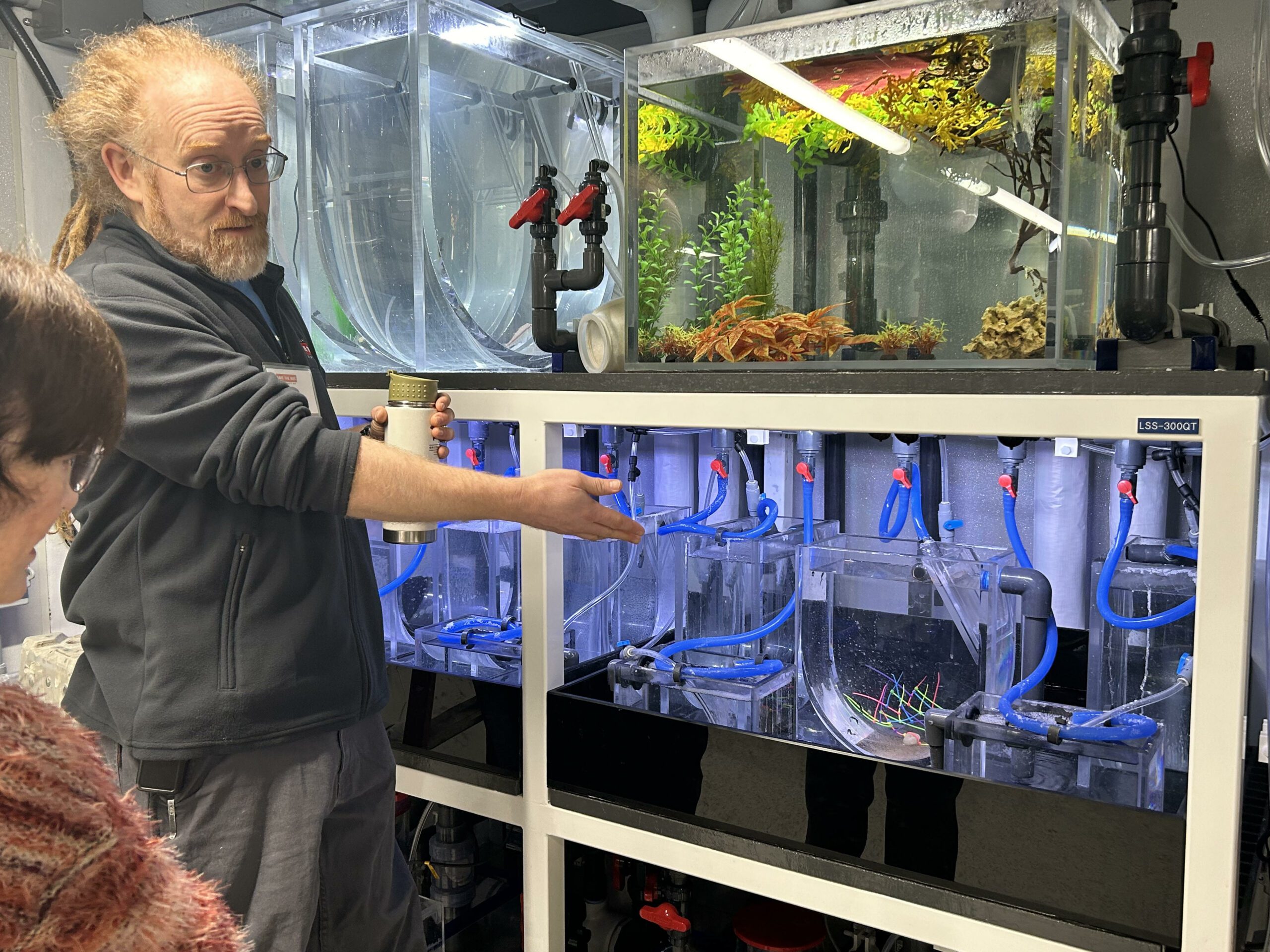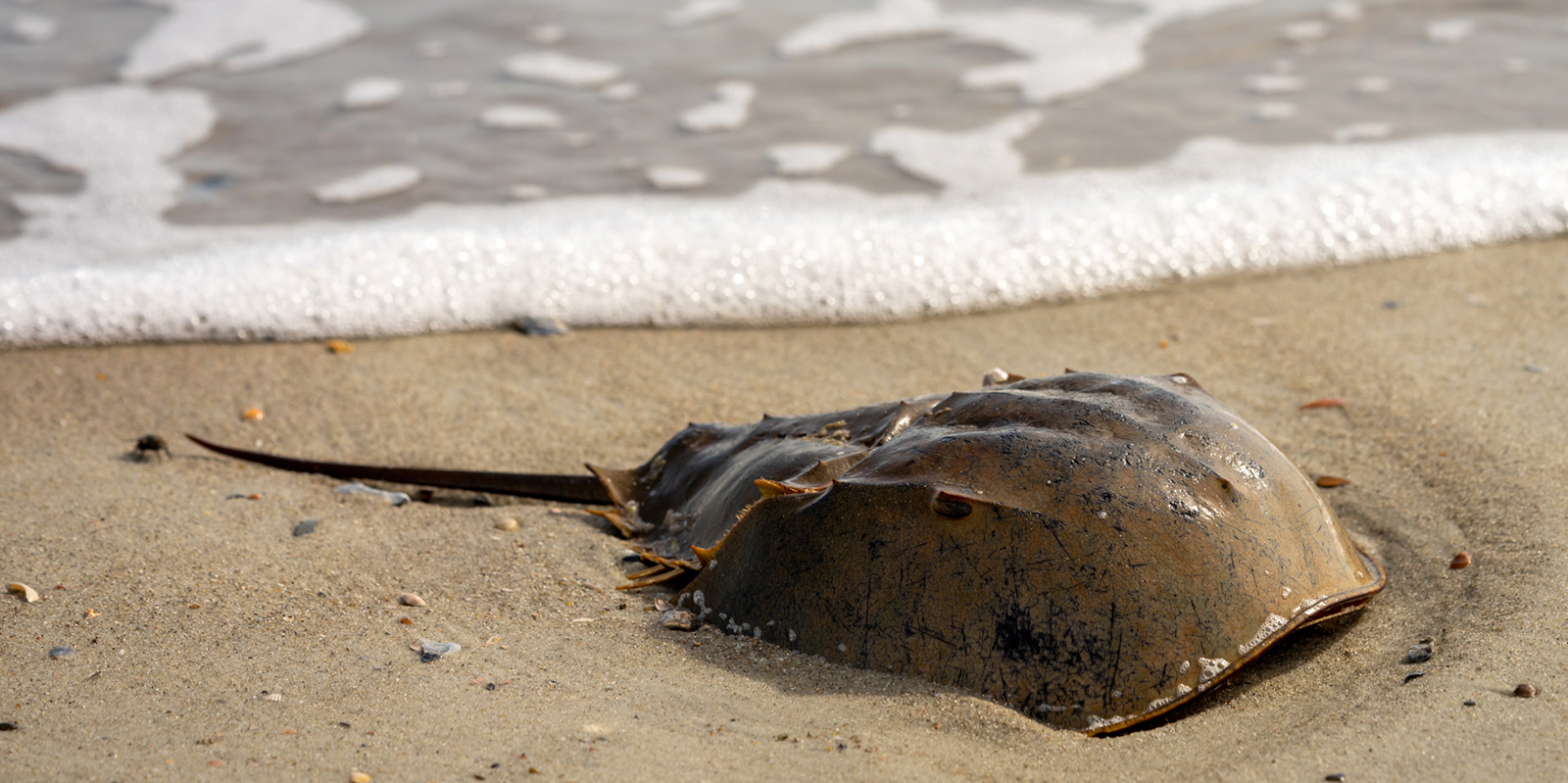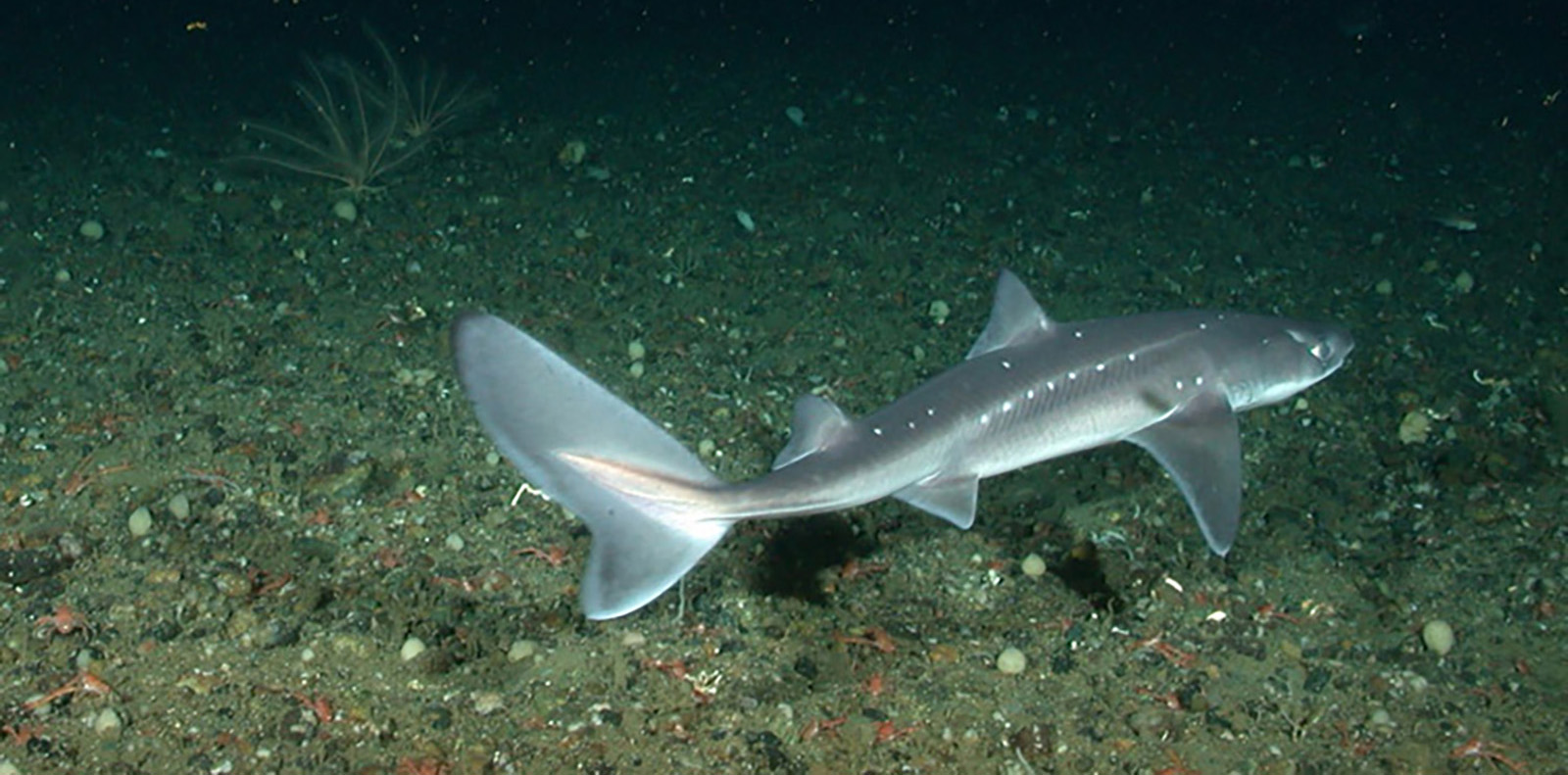Seaweed: Much More Than Beach Nuisance
May 22, 2013
Red tendrils and green blades churn in the waves like a giant salad in a spinner. Thin, wiry branches ensnare the ankles of those who are brave enough to wade through the shallows. The water is lovely — you just have to make it past all the seaweed.
Most Rhode Island beachgoers and waterfront property owners have had at least one unpleasant experience with heavy seaweed deposits along shore, which attract bugs and emit a rotten egg scent. However, the problem of excessive seaweed growth is not unique to Narragansett Bay. During the past 50 years, many coastal ecosystems have suffered from chronic blooms of seaweeds, also known as macroalgae. Macroalgae are divided into three phylogenetic groups of similarly colored species — chlorophytes (green seaweeds), rhodophytes (red seaweeds) and phaeophytes (brown seaweeds).
In Narragansett Bay, the most common blooming offenders include fast-growing natives in the sea lettuce family, and wiry, branching rhodophytes; however, blooms of brown seaweeds can also occur. In addition to creating aesthetic problems, seaweed blooms have consequences for economics and human health. Macroalgal mats deposited on crescent-shaped beaches physically entrap trash and pollutants such as fecal coliform, prolonging water impairment and beach closures.
For example, seaweed has been blamed for extended closure and revenue loss at Easton’s Beach in Newport following rainstorms that flushed pollution into Narragansett Bay. Thick mats of decomposing seaweeds release potent hydrogen sulfide gas, which can cause nausea and other ailments at high concentrations.
Although seaweeds occur naturally in marine ecosystems, the addition of excessive nutrients such as nitrogen to bodies of water can trigger nuisance algal blooms. Nitrogen enters estuaries through ecosystem processes such as atmospheric deposition, but coastal human settlements greatly increase loads by discharging agricultural runoff and wastewater. High concentrations of nitrogen fertilize macroalgae and phytoplankton, causing these fast-growing organisms to proliferate. Dense mats of seaweed and clouds of tiny phytoplankton prevent light from reaching benthic eelgrass beds, killing these essential fish nurseries.
In the process of decomposing algae, bacteria consume so much oxygen that there is not enough left in the water for other organisms to survive. These low oxygen — or hypoxic — events can trigger fish kills, such as the infamous Greenwich Bay fish kill of 2003, when more than a million dead juvenile menhaden washed ashore.
Seaweed wraps
But let us consider this macroalgae problem from a different perspective — are seaweeds really such an undesirable byproduct of eutrophication? Spa-goers pay upwards of $100 for luxurious seaweed wraps, which are said to detoxify the skin. In nature, macroalgae play a large role in extracting nitrogenous pollutants from the water, which they store in their cells and use to create new tissue. Seaweeds deprive phytoplankton of nutrients and can therefore prevent toxic, harmful algal blooms such as red tides, cyanobacteria blooms and brown tides.
It is true that macroalgae are both a source and a sink of nitrogen in the ocean, decomposing rapidly at temperatures above 86 degrees Fahrenheit and releasing stored nitrogen back into the water column. However, if seaweed mats are washed ashore and deposited during high tides, nitrogen is recycled as fertilizer for land plants. And, like all photosynthesizing organisms, macroalgae capture and sequester atmospheric carbon, helping to mitigate the negative effects of climate change.
If seaweeds are harvested and put to some commercial use before they decompose, then the nutrients they contain can be removed from the estuary and recirculated to the land. Nutrient bioextraction, or the removal of nutrients from an aquatic ecosystem through the harvest of its increased biological production, is based on this concept. Integrated aquaculture systems often rely on aquatic plants or shellfish to absorb waste products created by fish stock. Oysters, for example, can filter up to 2 gallons of nutrient-rich water an hour.
Bioremediation shouldn’t replace preventative management actions, and several important steps have already been taken to reduce nitrogen discharge into Narragansett Bay. Nearly 70 percent of the nitrogen inputs into upper Narragansett Bay originate from the 22 wastewater treatment facilities (WWTFs) in the bay’s watershed. In response to the Greenwich Bay fish kill, the General Assembly mandated a 50 percent reduction in wastewater discharge by Rhode Island’s 11 coastal WWTFs, to be implemented by 2014.
Several plants have already converted to tertiary treatment to remove additional nitrogen from WWTF discharge. Unfortunately, non-point sources of anthropogenic nitrogen, such as individual homes, cesspools, septic systems, pet waste, and lawn and agricultural fertilizers, also contribute significant quantities of nitrogen and are much more difficult to regulate. Actions such as cesspool removal, reduction of industrial fertilizer use and stormwater mitigation are important to limit these sources.
One significant step toward managing non-point runoff came in 2008, when the Narragansett Bay Commission officially opened its combined sewer overflow (CSO) abatement tunnel. This $359 million tunnel captures excess runoff during heavy rain events, allowing the facility to treat it once it has the capacity.
Although preventative action should be prioritized, nitrogen reduction from the source has its limitations. By destroying wetlands and overfishing filter feeders, humans have diminished ecosystems’ natural capacities for nitrogen assimilation. Restoring wetlands and shellfish beds and employing bioextractive technologies would help rebuild Narragansett Bay’s natural resistance to nitrogen pollution.
Bioextraction complements source control programs and provides a method to remove nitrogen after it has already entered the water. By implementing incentive programs and the commercializing collected products such as seaweeds, bioextraction can be a low-cost, even profitable, business endeavor. Bioextraction provides a sustainable supplement that accounts for both human needs and ecological integrity.
Plenty of uses
Collected macroalgae would certainly not go to waste. For some 20,000 years, beginning even before the dawn of arable farming, humans have used macroalgae for food, medicine and composted fertilizer. In the present day, seaweeds have an astonishing number of commercial uses and are key ingredients in everything from foods such as ice cream to pharmaceuticals and cosmetics.
Macroalgae’s rapid decomposition and high nitrogen content make them a highly effective fertilizer for crops and gardens, comparable in quality to cow manure and other natural fertilizers. Seaweeds also display impressive potential as biofuels, and scientists are developing methods to transform their sugars into ethanol.
Unlike most plants, macroalgae contain no lignin, a complex, woody molecule that microorganisms have trouble breaking down, making it possible to yield high quantities of biofuel per each unit of seaweed. Seaweeds have even permeated the foodie community, where these “sea vegetables” are being rediscovered as super foods. Seaweeds are low in calories and high in minerals such as potassium, iron, manganese and vitamin B12, making them the perfect snack for the health-conscious.
Internationally, countries such as Chile, China and Sweden are exploring the use of bioextractive technologies. An ongoing pilot study in Long Island Sound will help determine the feasibility of implementing these practices in the United States. Already, the state of Rhode Island has taken small steps toward bioextraction. The state Department of Environmental Management (DEM) bought a specialized tractor called the Barber Surf Rake to remove nuisance macroalgae at common bloom sites such as Conimicut Point, Stillhouse Cove and Riverside. In 2009, the city of Newport bought a seaweed rake to remove blooming red species from Easton’s Beach.
Newport received grant money in 2010 to investigate the potential of recycling collected seaweed in an innovative biofuel program; unfortunately, the Office of Energy Resources determined that the project was unfeasible given current available technologies.
Furthermore, several aquaculturalists and wild seaweed foragers already harvest and sell seaweed in Rhode Island.
If bioextraction, macroalgae aquaculture and collection programs continue to expand, it will be important to ensure that seaweed harvesting is managed sustainably. Moderate quantities of seaweed serve as essential food sources for marine animals, and provide nursery habitat for juvenile crabs and fish. Those foraging for wild seaweed must be sure to follow traditional wildcrafter guidelines, harvesting only a third of each bed of seaweed and leaving spore-producing parts behind to allow continued reproduction.
Collection for personal use is particularly easy in Rhode Island, where the Constitution stipulates citizens’ right to collect seaweed from public access points along the shoreline. Macroalgae foragers must be certain to avoid polluted waters by collecting only in areas open to shellfishing.
Categories
Join the Discussion
View CommentsRecent Comments
Leave a Reply
Your support keeps our reporters on the environmental beat.
Reader support is at the core of our nonprofit news model. Together, we can keep the environment in the headlines.
We use cookies to improve your experience and deliver personalized content. View Cookie Settings




Seaweed is one of the best fertilizers which are now used in an extensive format. Red tendrils and green blades form a giant squid salad in the sea. But this creates an extensive problem as the growth of excessive seaweed increase the nitrogen content of the soil and water is extremely harmful. In order to prevent steps are been taken which affect the seaweed adversely.
I have been going to Newport on vacation since I was born. I remember when I was young 2nd beach was raked every morning and it removed the seaweed from the shore so it would not just be taken out by the tide again. Why did they stop doing this it seemed to help?